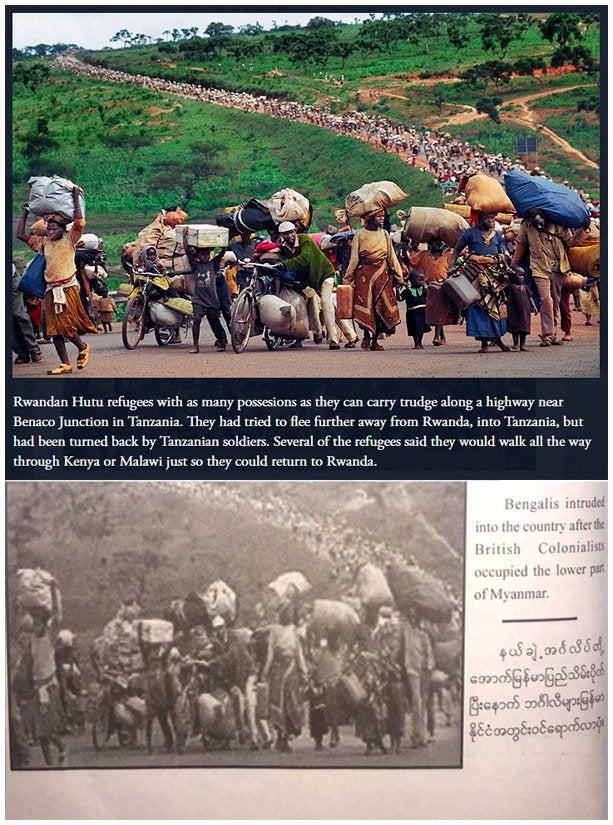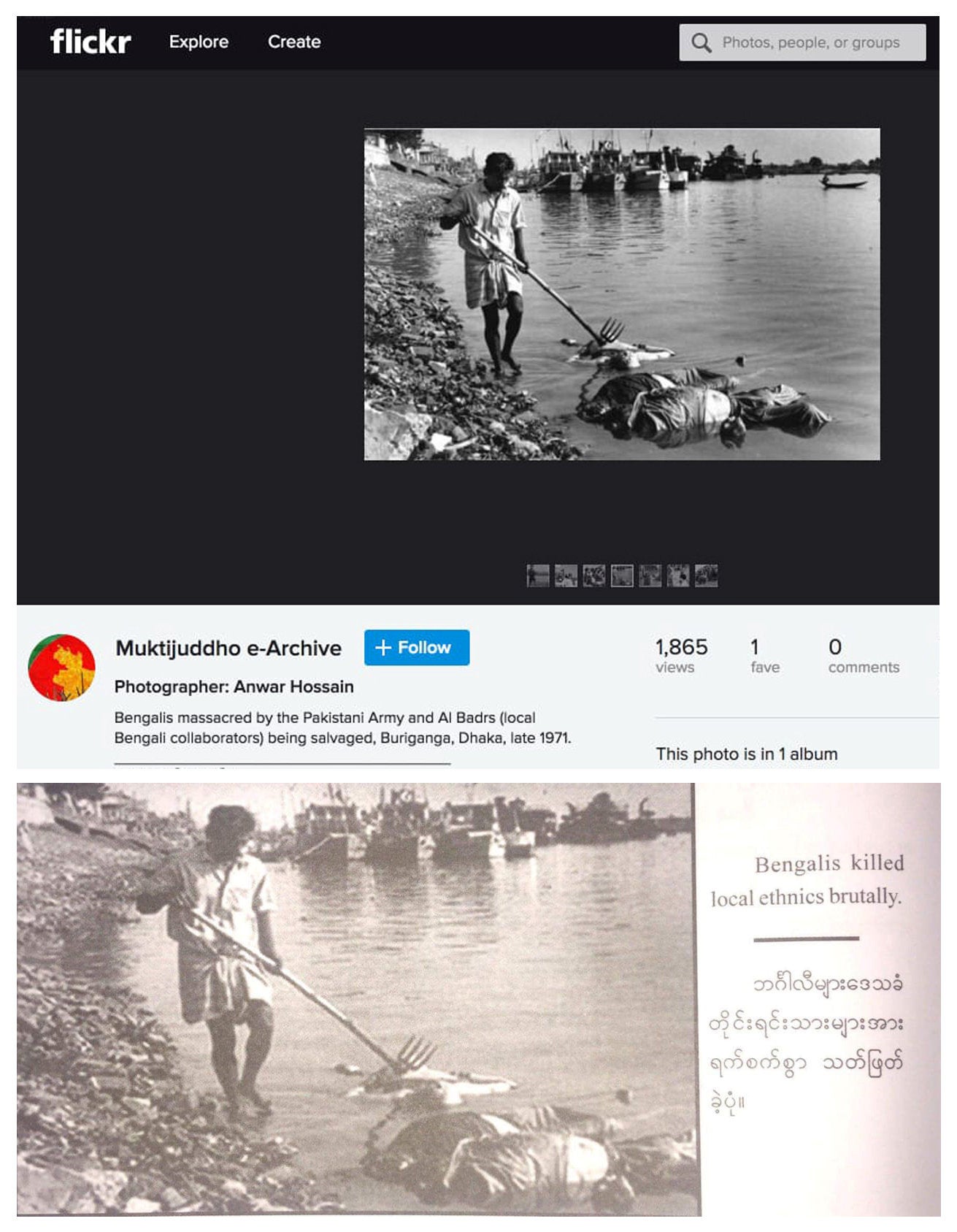Myanmar army uses fake photos of 'Muslims killing Buddhists' in book on Rohingya crisis
Several historic images taken out of context in propaganda piece released by armed forces
Your support helps us to tell the story
From reproductive rights to climate change to Big Tech, The Independent is on the ground when the story is developing. Whether it's investigating the financials of Elon Musk's pro-Trump PAC or producing our latest documentary, 'The A Word', which shines a light on the American women fighting for reproductive rights, we know how important it is to parse out the facts from the messaging.
At such a critical moment in US history, we need reporters on the ground. Your donation allows us to keep sending journalists to speak to both sides of the story.
The Independent is trusted by Americans across the entire political spectrum. And unlike many other quality news outlets, we choose not to lock Americans out of our reporting and analysis with paywalls. We believe quality journalism should be available to everyone, paid for by those who can afford it.
Your support makes all the difference.Produced by Myanmar’s army, a new book on the Rohingya crisis contains numerous misrepresented photographs, including one image that incorrectly claims to be members of the Muslim minority killing Buddhists.
The 177-page Myanmar Politics and the Tatmadaw: Part I features the army’s narrative on the military crackdown which was recently described as genocide by United Nations investigators.
Much of the book’s content is sourced from the military's “True News” information unit, which since the beginning of the crisis has distributed the army’s version of events, mostly in Facebook posts.
However, an investigation by the Reuters press agency found many of the photographs contained within the publication had been completely removed from their original context.
One, which depicts a man holding a farming tool standing over two bodies, is captioned: “Bengalis killed local ethnics brutally,”.
However, the photograph was actually taken in Dhaka during Bangladesh's 1971 independence war, when hundreds of thousands of Bangladeshis were killed by Pakistani troops.
The book attempts to paint Rohingya, who regard themselves as native to western Myanmar, as interlopers and illegal immigrants from Bangladesh, repeatedly referring to them as “Bengalis”.
One faded black-and-white image shows a crowd of people, who appear to be on a long march with their backs bent over, apparently a depiction of Rohingya arriving in Myanmar before 1948.
“Bengalis intruded into the country after the British Colonialism occupied the lower part of Myanmar,” the caption reads.

But the picture is instead a distorted version of a 1996 image of refugees fleeing genocide in Rwanda.
Another grainy photo, captioned “Bengalis entered Myanmar via the watercourse,” is actually a 2015 image of Rogingya leaving Myanmar by boat in their tens of thousands for Thailand and Malaysia.
The book is on sale at bookstores across Myanmar's commercial capital Yangon.
A member of staff at Innwa, one of the biggest bookshops in the city, said the 50 copies the store ordered had sold out, but there was no plan to order more.
“Not many people came looking for it,” added the bookseller, who declined to be named.

More than 700,000 Rohingya have fled Myanmar’s Rakhine state into Bangladesh and other neighbouring countries amid persecution in recent years.
The UN has said it found evidence of extrajudicial killings, gang rapes and arson as the army lashed back at attacks by Arakan Rohingya Salvation Army insurgents in a “grossly disproportionate” reaction.
In the introduction to the book the writer, listed as Lieutenant Colonel Kyaw Kyaw Oo, says the text was compiled using “documentary photos” with the aim of “revealing the history of Bengalis”.
U Myo Myint Maung, permanent secretary at Myanmar's ministry of information, declined to comment, saying he had not read the book.
Additional reporting by Reuters

Join our commenting forum
Join thought-provoking conversations, follow other Independent readers and see their replies
Comments